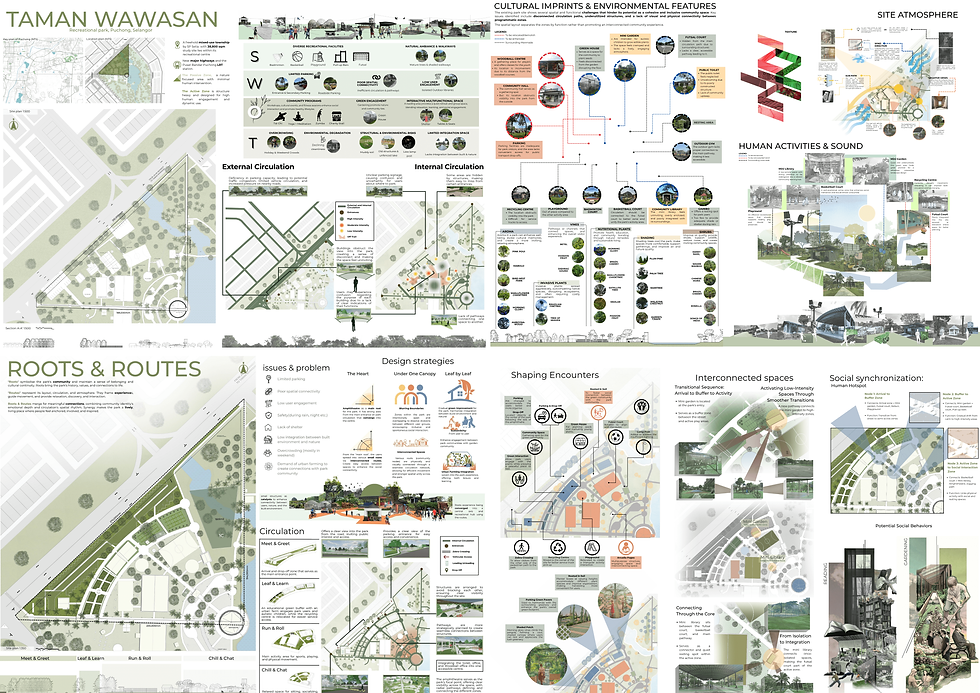[.P1A | SITE ANALYSIS & DESIGN RESPONSE – COMMUNITY]
The focus of this project is to cultivate a deep, contextual understanding of Taman Wawasan Recreational Park through site analysis and community engagement, laying the groundwork for a meaningful architectural response that celebrates local identity and fosters social interaction. The design intervention seeks to strengthen the connection between people and place by responding to both the physical environment and the cultural fabric of the surrounding neighbourhood.
This phase emphasizes the significance of environmental and social sensitivity in architectural thinking—where the presence of lush greenery, recreational users, and nearby residential communities becomes an active driver in shaping the future Creative and Recreational Hub. The project draws upon on-site observations, community conversations, and spatial analysis to inform the design manifesto, establishing a narrative that prioritizes inclusivity, sustainability, and well-being.
In addition to mapping physical and intangible qualities, the project aims to uncover the site’s Genius Loci—its inherent spirit—by exploring how light, movement, sound, and texture shape user experience. The analysis culminates in a shared vision for future interventions that seamlessly integrate into the park’s ecosystem, offering spaces for gathering, learning, and play. Ultimately, this foundation serves as a catalyst for thoughtful, community-centred design in Project 1B and 1C.
Site visit & data collection
This phase involved immersive on-ground exploration through sketches, photography, interviews, and mapping exercises. These methods captured both tangible elements—like circulation, vegetation, and built structures—and intangible qualities such as atmosphere, soundscapes, and community behaviour, forming the analytical backbone for our design response.








Final Outcome
Our manifesto reimagines the site layout through new spatial configurations that improve connectivity, visibility, and accessibility. Strategic zones for P1B and P1C are proposed near key circulation paths to maximize engagement. The programs address community needs—ranging from wellness and youth activities to food, arts, and inclusive education—fostering participation and cultural vibrancy.